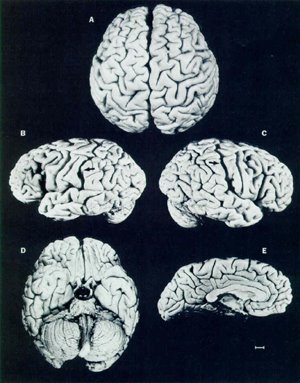
As the discovery of an accelerating universe became invaluable to the makeup of the cosmos, it became clear that there was a mass of missing information. A fat 70% of the universes substance was sheathed in mystery, with the exception that it was undoubtedly pushing along the expansion of the universe-instead of holding it back...this is dark energy.
It is theorized that the big bang gave everything an outward push, but gravity should be slowing down that push... so, its only logical to consider some kind of force/energy working against gravity... Dark Energy? Its possible that this is the energy associated with empty space that Einstein had suggested in 1917 when he introduced his cosmological constant (which he in fact considered his 'greatest blunder') and if that turns out to be the case, well then this is yet another act of remarkable foresight on his part.
So whats the news? As long as there has been the idea of dark energy, there has been a strict grip on the Copernican Principle-that Earth is not in a central or otherwise special position in the universe, and this extending into the cosmological principle-at any moment in time all points and directions in space look the same. But! A small collection of physicists are considering dark energy sans the principles. Meaning there might be no such thing as dark energy at all. Meaning, we might exist in a very unique spot in the universe-the center of a giant cosmic void.
So, what are the alternative explanations?
1. Rather than expanding evenly, like a balloon might, the universe is expanding unevenly, like a big amoebic blob. How? I will tell you-in the previous view of our location in the universe, the decelerating expansion rate was explained by the effects of dense matter tugging at the fabric of spacetime and slowing down the rate of expansion (this coming from the outward push of the big bang) BUT if one were to put us at the center of the aforementioned cosmic void, where matters density is conceivably much less than anywhere else in the universe, we would find less slow down (less matter), faster expansion (especially at the center of the void, slowing down as it moves outward towards the edge and creeps up on the surrounding high density space). At any given time different parts of space will expand at different rates.

As you might imagine, this change in design is an upset of massive proportions, for in general astronomy, the larger a structure is, the rarer it should be and the probability of a void big enough to mimc dark energy is less than one part in 10 to the 100th power (or a googol tahaha). Now to bring us round to singularities-for a void to mimic dark energy, the expansion rate would have a significant decrease away from us and in all directions, meaning the density of matter and energy must increase sharply away from us and in all directions... this would make the shape of an upside down witches hat, the tip of which, points out us, our place in the void. Ugh, but this goes against the assumed smoothness of structures in the universe. AND, my favorite part, Vanderveld and Flanagan of Cornell showed that the tip, us, would have to be a singularity-wild.




.jpg)